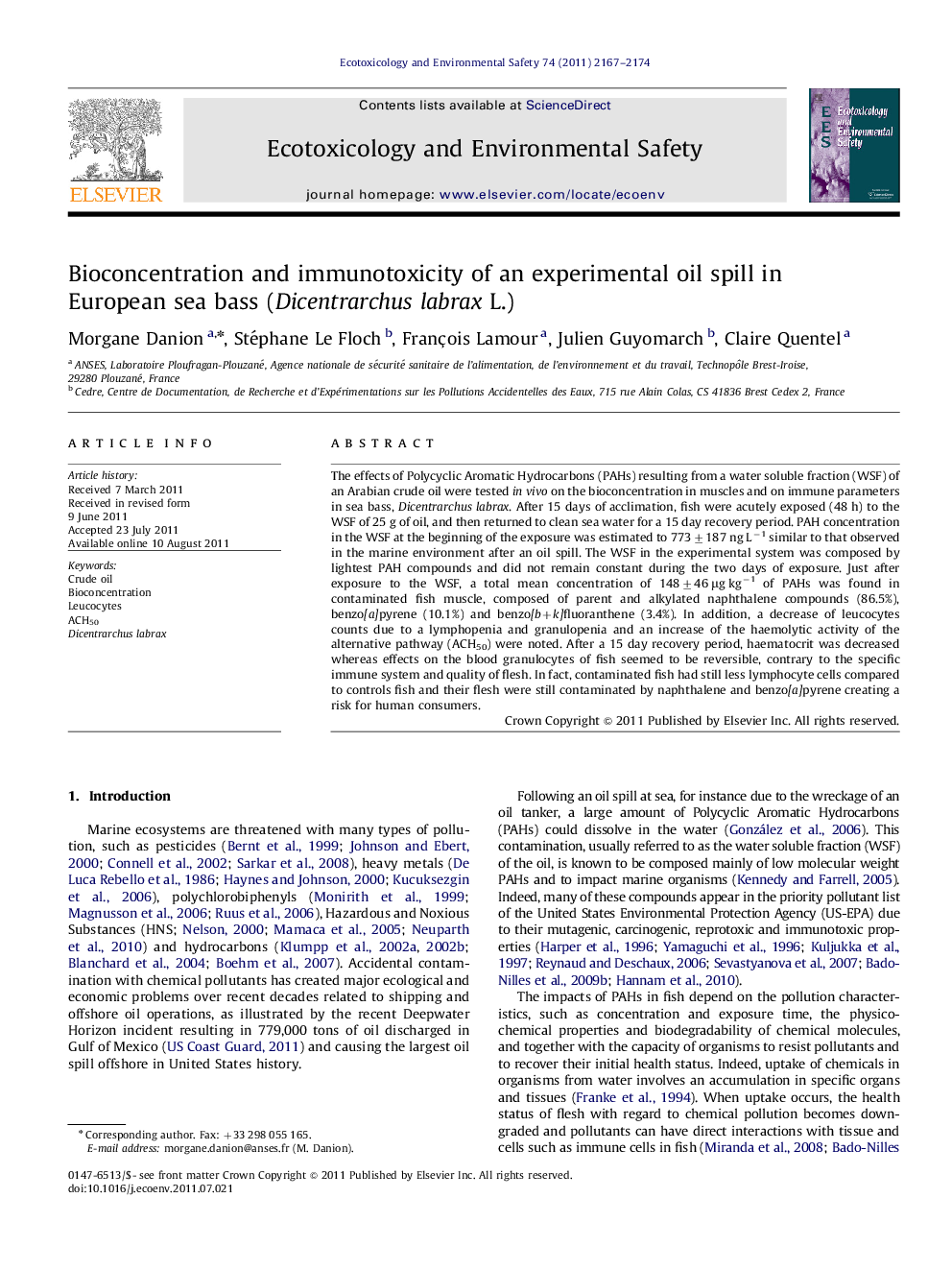| Article ID | Journal | Published Year | Pages | File Type |
|---|---|---|---|---|
| 4421014 | Ecotoxicology and Environmental Safety | 2011 | 8 Pages |
The effects of Polycyclic Aromatic Hydrocarbons (PAHs) resulting from a water soluble fraction (WSF) of an Arabian crude oil were tested in vivo on the bioconcentration in muscles and on immune parameters in sea bass, Dicentrarchus labrax. After 15 days of acclimation, fish were acutely exposed (48 h) to the WSF of 25 g of oil, and then returned to clean sea water for a 15 day recovery period. PAH concentration in the WSF at the beginning of the exposure was estimated to 773±187 ng L−1 similar to that observed in the marine environment after an oil spill. The WSF in the experimental system was composed by lightest PAH compounds and did not remain constant during the two days of exposure. Just after exposure to the WSF, a total mean concentration of 148±46 μg kg−1 of PAHs was found in contaminated fish muscle, composed of parent and alkylated naphthalene compounds (86.5%), benzo[a]pyrene (10.1%) and benzo[b+k]fluoranthene (3.4%). In addition, a decrease of leucocytes counts due to a lymphopenia and granulopenia and an increase of the haemolytic activity of the alternative pathway (ACH50) were noted. After a 15 day recovery period, haematocrit was decreased whereas effects on the blood granulocytes of fish seemed to be reversible, contrary to the specific immune system and quality of flesh. In fact, contaminated fish had still less lymphocyte cells compared to controls fish and their flesh were still contaminated by naphthalene and benzo[a]pyrene creating a risk for human consumers.
► Sea bass were acutely exposed to in vivo hydrocarbons pollution similar to an oil spill. ► Bioconcentration of PAHs was found in fish flesh causing a potential risk for human consumers. ► An impairment of specific and non-specific immune systems was observed in sea bass.
